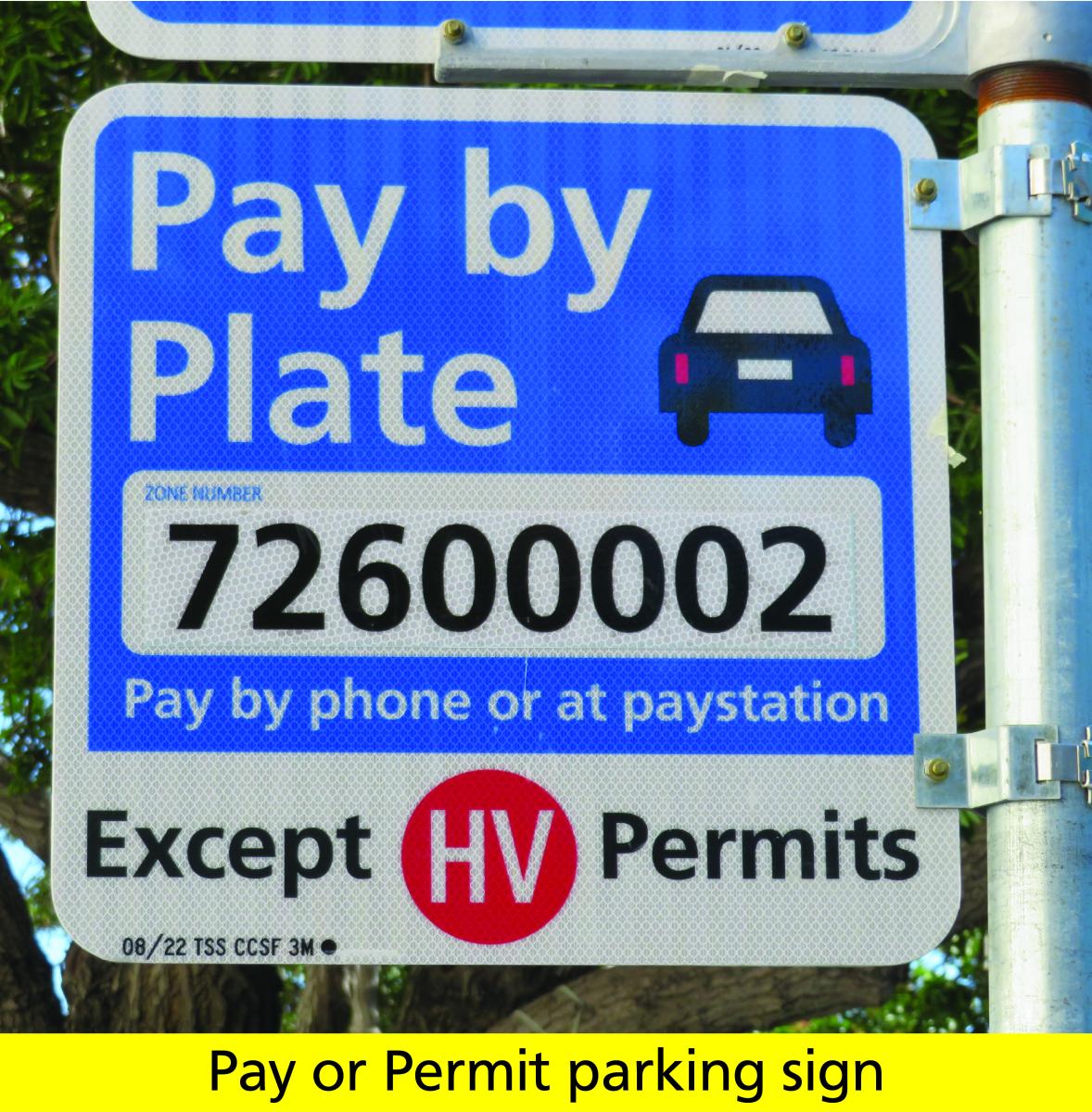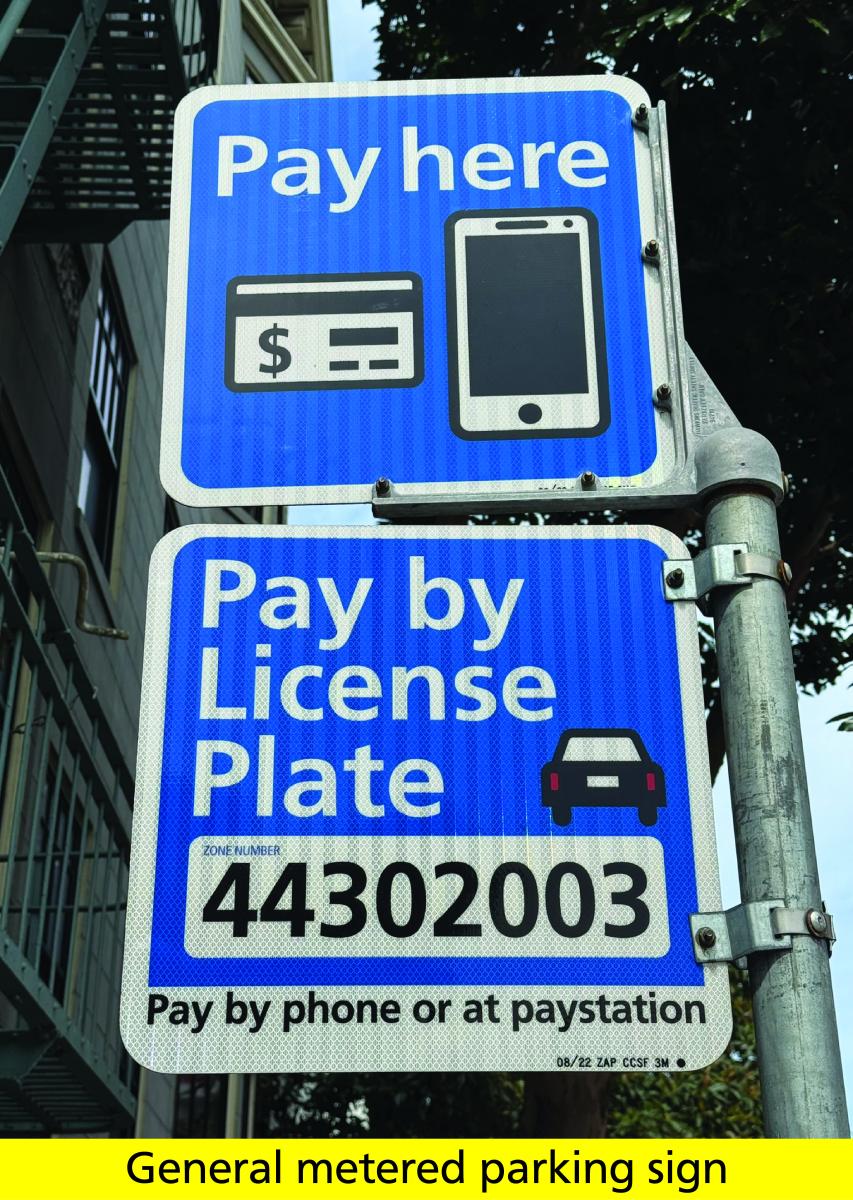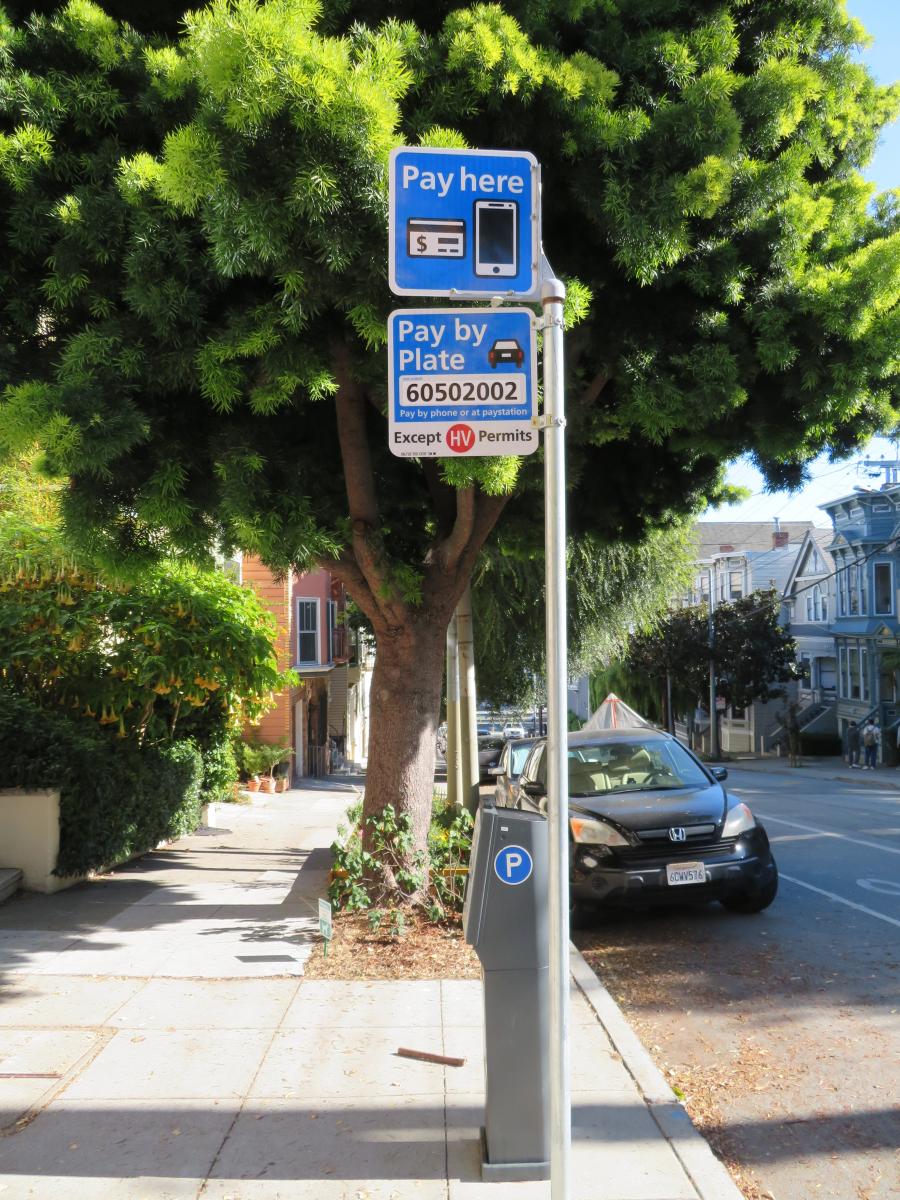Welcome to our Frequently Asked Questions (FAQs) page about Pay or Permit Parking! Here, you will find answers to common questions about how to identify Pay or Permit Parking, when and where to pay, how to secure a residential parking permit, and policy-related questions.
What is Pay or Permit Parking and how does it work?
What is Pay or Permit Parking?
- Pay or Permit Parking allows:
- Visitors to park without a time limit, so they pay only for the time they need.
- Residents with a residential parking permit (RPP) to park and not have to pay hourly parking fees.
How does Pay or Permit Parking work?
- For visitors:
- You can pay by phone: look for signs along the block that display a location code you can use to pay with the PayByPhone App.
- You can also pay with cash or card at a paystation. There is at least one paystation on each side of a Pay or Permit block with a sign that says “pay here”
- For residents:
- You can secure an annual or shorter-term permit.
- To apply for a permit, you can:
- Visit our Residential Parking Permit (RPP) webpage
- Visit the SFMTA Customer Service Center at 11 South Van Ness Ave
- To apply for a permit, you can:
- Other permits are available including for caregivers, business owners, and teachers.
- You can secure an annual or shorter-term permit.
What is the goal of Pay or Permit Parking?
To make it easier to find parking in mixed-use and residential areas with lots of visitors parking, often near commercial corridors. This makes it easier for residents to park near their homes and also helps businesses by making it easier for customers to find parking.
Visitor Questions
When do I have to pay?
- Pay or Permit Spaces are enforced during the days and times posted at each paystation (see photo for reference).
- You can confirm if payment is required by checking the paystation on the block where you are parking or in the PayByPhone app.
-
Payment is required on most holidays except for New Year's Day, Thanksgiving Day, and Christmas Day. For more information, you can view our Holiday Street Parking Enforcement Schedule Page

- All vehicles must be moved for street sweeping and comply with the statewide rule of moving every 72 hours.
How does enforcement work?
Parking control vehicles use Automated License Plate Recognition (ALPR) technology to check if cars have a valid permit or have paid for parking. License plate data and images are not stored long-term.
How do I know how much parking will cost?
The SFMTA uses demand-responsive pricing which is periodically adjusted and varies from block to block and by time of day. You can check the latest rates here: Demand-Responsive Parking Pricing | SFMTA.
Permitholder and Resident Questions
Can I park for free at any meter with my RPP permit?
- Look for signs installed where you plan to park. If the sign has your RPP area permit letter(s), then it is a Pay or Permit Parking block, and you can park for free with your permit!

- If you have an RPP permit with a different area letter, you must pay to park in that spot during metered hours.
- General metered parking does not have the permit exception at the bottom of the sign, and everyone must pay to park during metered hours.

What does Pay or Permit look like?
- Paystations are about four feet tall, with a screen on one side. You will usually see one to two paystations on each side of the block.
- Paystations also have "pay here” signs to make them easier to spot.


Business Questions
Can I get a permit for my business?
Yes, businesses may obtain one parking permit for a personal vehicle per postal address and up to three permits for delivery vehicles with commercial license plates: Residential Parking Permits (RPP) | SFMTA.
Where can I find lower-priced parking for my employees?
The SFMTA offers demand-responsive parking pricing: rates vary by block and by time of day. In many cases, cheaper parking can be found just a block or two away even from the most popular destinations. To check the most current rates, please visit: Demand-Responsive Parking Pricing | SFMTA.
What about loading for my business?
Loading zones continue to be available for business needs. You can learn about the types of loading zones and request a zone or modification to an existing zone to better support your operations by visiting: Color Curbs | SFMTA
Policy Questions
How do you choose where to add Pay or Permit Parking?
Many factors can determine if Pay or Permit Parking would be a good fit for a neighborhood. Two parking factors are limited parking availability and a high number of visitors parking. Additional neighborhood context, such as nearby commercial activity or other visitor attractions, is also considered. Lastly, neighborhood interest in Pay or Permit Parking is an important part of the decision-making process.
Why don't Pay or Permit meters have time limits?
Removing time limits provides more flexibility for visitors to the neighborhood who might need to stay longer than the two-hour time limit commonly used in RPP areas. Pricing is more effective than time limits in maintaining parking availability and is easier to enforce.
What happens to the revenue from Pay or Permit parking paystations?
The revenue from parking meters in San Francisco supports Muni transit service as mandated by the City Charter. It cannot be allocated for other uses.
What happens to the revenue from residential parking permits?
The RPP program is a cost-recovery program. This means that the prices are set so that revenue covers only the costs of administering and enforcing the program. It cannot be allocated for other uses such as transit.
Where did the idea for Pay or Permit Parking come from?
Pay or Permit Parking was established in 2018 as part of the Residential Parking Permit Evaluation & Reform Project to improve parking in residential areas. In many RPP areas, traditional two-hour time limits do not always ensure enough parking availability for residents. These limits can be inconvenient for visitors who need to stay longer and can be challenging to enforce at scale. To address these challenges, SFMTA added Pay or Permit Parking as a flexible solution, combining paid parking with residential permit parking. This approach is not unique to San Francisco—many other cities use similar tools to manage parking in residential neighborhoods where it is challenging to park.
Have the impacts of Pay or Permit parking been studied?
Yes, the impacts of Pay or Permit Parking were studied as part of the first large-scale implementation in Hayes Valley. The findings are documented in detail in the Hayes Valley Pay or Permit Evaluation Report (will be released for review in the near future).
Are you planning to expand Pay or Permit Parking to more neighborhoods?
The SFMTA is studying expansion to additional neighborhoods and won a grant to fund expansion for a few neighborhoods. To learn more visit: Pay or Permit Parking Expansion Project | SFMTA
How can I provide feedback about Pay or Permit Parking?
To share feedback on Pay or Permit Parking please email infoRPP@sfmta.com.